Engaging the Private Homeowner: Linking Climate Change and Green Stormwater Infrastructure
Abstract
1. Introduction
- Becoming warmer and wetter.
- Experiencing a loss of winter cold, most notably, a warming of winter overnight temperatures.
- Experiencing an increase in frequency and intensity of extreme rainfall events.
1.1. Climate Resilience
1.2. Stormwater Management
1.3. Public–Private Linkage in the MLSCA
- The regional stormwater protection team or RSPT is a collaboration between local municipal separate storm sewer systems (MS4s)—communities subject to regulation based on the Clean Water Act, along with partnering agencies and organizations.
- The Duluth Urban Watersheds Advisory Committee, or DUWAC, is made up of representatives from the municipalities in the Duluth urban area along with other regional organizational members. The Committee’s primary purpose is to serve as an information exchange and coordinating mechanism for watershed projects in the urban area.
1.4. Private Citizen Participation
2. Methods
3. Results
3.1. Themes
3.1.1. Rationale
- The health of waterways, primarily Lake Superior, as a narrative, for example: “Think about quality and quantity of the stormwater so close to Lake Superior and streams.” The emphasis on Lake Superior as a rationale in multiple discussions may be an example of the cross-cutting subtheme of localizing the effort; Lake Superior provides a local context and motivation for action.
- The household as a narrative. This was best captured in one discussion when participants urged use of the household level as a focal point and as a way to “build support for the overall effort.”
- Taking care of community as a narrative. For example, one participant described it in the following way: “…this is part one of the whole point…. linking private responsibility and public goods. That is the start of the topic…you are helping the overall community by taking care of what is yours.” A reminder here that participants shared a wide range of motivations for their willingness to act in the future, including 87% of participants who indicated prioritizing the ability to contribute to community stormwater management efforts.
3.1.2. Audience
3.1.3. Content
3.1.4. Format
Delivery
Form and Function
Style and Design
4. Discussion
A Look to Vermont
Localizing the Tool
- Format is a unique blend of web based and hard copy (web-based PDF). The Vermont Guide information is designed to work as an online publication with active, useful links to provide additional information. In addition, the format also allows the information to be printed into a useful booklet.
- Guide provides outreach to an engaged audience. This document has useful information for a broad cross-section of the public; however, the focus is skewed toward the motivated and engaged user, i.e., it is a highly action-oriented document. The guide provides content and diagrams to support action, and also provides basic cost, installation, maintenance, problem-solving, and space information to guide decision making.
- Guide provides a rationale for action. The Vermont Guide provides two pages early in that document that address the problem of stormwater runoff and defines green stormwater infrastructure in the context of providing a rationale to the question of why take action? In order to make it appropriate in an MLSCA context, the health of the Lake Superior Watershed should be stressed via a short section highlighting this reason for action. The underlying impetus behind this effort, climate change trends, must also be added to provide an overall rationale that includes climate adaptation, a rationale not included in the Vermont Guide. In addition, this section could provide a reference to many other co-benefits of green infrastructure. For example, water quality protection, aesthetics, biodiversity enhancement, outdoor recreation opportunity, etc., could be highlighted.
- Broad scope of information in a concise document. The format provides detail-rich content. The concise content provides a background to the question of just what stormwater is and specific information behind taking action. In order to make it appropriate in an MLSCA context, content regarding MLSCA soil, bedrock, and topography needs to be included (see Point 7 below).
- The format is visually rich and uses a variety of graphic approaches to convey information. Extensive application of combined use of diagrams and pictures to provide real world context and detailed installation information is a part of the Vermont Guide format, including measurements, scale, and nonobvious content. In order to make the guide appropriate in an MLSCA context, localizing some the images is necessary (see Point 7 below).
- Terminology defined to avoid confusion and to educate/raise awareness of stormwater management. The Vermont Guide has numerous definitions worked into the guide throughout the text that assist the reader. For example, the noted description of green stormwater infrastructure in the introduction. Careful attention to vocabulary is needed to assure clarity and local appropriateness of terminology for an MLSCA context.
- Localized content in multiple ways. Localizing the content is apparent in the Vermont Guide in both visual images (e.g., pictures from Vermont with place labels) and content-oriented ways (e.g., link to the Vermont Agency of Natural Resources Atlas of the Vermont Agency of Natural Resources). Localizing information was the strongest cross-cutting subtheme from the research results of this study. Therefore, in order to make a revised guide appropriate in an MLSCA context, visual images and links to appropriate agencies and sources for additional information need to be localized.
- Guide provides both rural and urban application. The State of Vermont, not unlike the MLSCA, has extensive rural areas and the Vermont Guide reflects this demographic. The range of rural to urban action possibilities is captured in the variety of practices presented in the Vermont Guide, for example, “rural driveways” to a “dry well” feature (suitable for limited urban space situations). An addition to the Vermont Guide is proposed that highlights resources for managing rural ditches common in the MLSCA drawing on the publication, The Field Guide for Maintaining Rural Roadside Ditches [41]; this publication designed for the unique and specific conditions of managing stormwater in rural northeastern Minnesota.
5. Conclusions
Funding
Acknowledgments
Conflicts of Interest
References
- Torregrossa, M. Did a Rain Gauge Really Record 1.75 Inches a Minute in U.P. Flash Flooding? 2018. Available online: https://www.mlive.com/weather/index.ssf/2018/06/colossal_rainfall_rate_found_d.html (accessed on 21 June 2018).
- Ibrahim, D. Storms batter Michigan, cause dozens of roads to collapse. The Weather Network. 18 June 2018. Available online: https://www.theweathernetwork.com/us/news/articles/us-weather/flood-houghton-michigan-wisconsin-state-of-emergency-sinkhole-storm/104879/ (accessed on 10 July 2018).
- Blumenfeld, K. Understanding Minnesota’s changing climate. In Proceedings of the Outdoor Recreation Climate Adaptation Workshop, Duluth, MN, USA, 25 October 2017. [Google Scholar]
- Leiserowitz, A.; Smith, N. Affective imagery, risk perceptions, and climate change communication. Oxf. Res. Encycl. Clim. Sci. 2017. [Google Scholar] [CrossRef]
- Osaka, S. Move over Polar Bears: Climate Change Has a New Symbol. 2018. Available online: https://grist.org/article/move-over-polar-bears-climate-change-has-a-new-symbol/ (accessed on 23 July 2018).
- Grove, K. Resilience; Routledge: New York, NY, USA, 2018. [Google Scholar]
- Walker, B.; Salt, B. Resilience Thinking: Sustaining Ecosystems and People in a Changing World; Island Press: Washington, DC, USA, 2012. [Google Scholar]
- Dellinger, M. Localizing climate change action. Minn. J. Law Sci. Technol. 2013, 14, 603–668. [Google Scholar] [CrossRef]
- Nordgren, J.; Stults, M.; Meerow, S. Supporting local climate change adaptation: Where we are and where we need to go. Environ. Sci. Policy 2016, 66, 344–352. [Google Scholar] [CrossRef]
- Klein, J.; Juhola, S.; Landauer, M. Local authorities and the engagement of private actors in climate change adaptation. Environ. Plan. C Politics Space 2016, 35, 1055–1074. [Google Scholar] [CrossRef]
- Minnesota Department of Natural Resources (MN DNR). North Shore Highlands Subsection. 2018. Available online: https://www.dnr.state.mn.us/ecs/212Lb/index.html (accessed on 20 June 2018).
- Groulx, M. Prospects for Place-Based Climate Change Adaptation: An Exploration of Place, Vulnerability and Collaborative Planning in Churchill, Manitoba. Ph.D. Thesis, University of Waterloo, Waterloo, ON, Canada, 2015. [Google Scholar]
- Barbosa, A.E.; Fernandes, J.N.; David, L.M. Key issues for sustainable urban stormwater management. Water Res. 2012, 46, 6787–6798. [Google Scholar] [CrossRef]
- Fitzgerald, J.; Laufer, J. Governing green stormwater infrastructure: The Philadelphia experience. Local Environ. Int. J. Justice Sustain. 2017, 22, 256–268. [Google Scholar] [CrossRef]
- Minnesota Pollution Control Agency. Municipal Stormwater (MS4). 2017. Available online: https://www.pca.state.mn.us/water/municipal-stormwater-ms4 (accessed on 18 June 2017).
- Keeley, M.; Koburger, A.; Dolowitz, D.P.; Medearis, D.; Nickel, D.; Shuster, W. Perspectives on the use of green infrastructure for stormwater management in Cleveland and Milwaukee. Environ. Manag. 2013, 51, 1093. [Google Scholar] [CrossRef]
- Derkzen, M.; van Teeffelen, J.A.; Verburg, P.H. Green infrastructure for urban climate adaptation: How do residents’ views on climate impacts and green infrastructure shape adaptation preferences? Landsc. Urban Plan. 2017, 157, 106–130. [Google Scholar] [CrossRef]
- Gill, S.E.; Handley, J.F.; Ennos, A.R.; Pauleit, S. Adapting cities for climate change: The role of green infrastructure. Built Environ. 2007, 33, 115–133. [Google Scholar] [CrossRef]
- Meascham, T.G.; Preston, B.L.; Smith, T.F.; Brooke, C.; Gorddard, R.; Withycombe, G.; Morrison, C. Adapting to climate change through local municipal planning: Barriers and challenges. Mitig. Adapt. Strateg. Glob. Chang. 2011, 16, 889–909. [Google Scholar] [CrossRef]
- United States Environmental Protection Agency. Green Infrastructure and Climate Change Collaborating to Improve Community Resiliency; EPA 832-R-16-004; United States Environmental Protection Agency: Washington, DC, USA, 2016.
- Tuler, S.P.; Webler, T.; Rhoades, J.R. Stormwater management in a time of climate change: Insights from a series of scenario-building dialogues. Weather Clim. Soc. 2016, 8, 163–175. [Google Scholar] [CrossRef]
- Federal Emergency Management Agency. Mitigation Ideas: A Resource for Reducing Risk to Natural Hazards. 26 June 2013. Available online: File:///Users/tombeery/Downloads/fema_mitigation_ideas_final508.pdf (accessed on 19 June 2018).
- Little, C. (Minnesota Department of Natural Resources, Two Harbors, MN, USA). Personal communication, 8 August 2018.
- Brown, H.L.; Bos, D.G.; Walsh, C.J.; Fletcher, T.D.; Rakesh, S.R. More than money: How multiple factors influence householder participation in at-source stormwater management. J. Environ. Plan. Manag. 2016, 59, 79–97. [Google Scholar] [CrossRef]
- Tompkins, E.L.; Eakin, H. Managing private and public adaptation to climate change. Glob. Environ. Chang. 2012, 22, 3–11. [Google Scholar] [CrossRef]
- White, I.; Connelly, A.; Garvin, S.; Lawson, N.; O’Hare, P. Flood resilience technology in Europe: Identifying barriers and co-producing best practice. J. Flood Risk Manag. 2016. [Google Scholar] [CrossRef]
- Koerth, J.; Jones, N.; Vafeidis, A.T.; Dimitrakopoulos, P.G.; Melliou, A.; Chatzidimitriou, E.; Koukoulas, S. Household adaptation and intention to adapt to coastal flooding in the Axios-Loudias-Aliakmonas National Park, Greece. Ocean Coast. Manag. 2013, 81, 43–50. [Google Scholar] [CrossRef]
- Botzen, W.J.W.; Aerts, J.C.J.H.; van den Bergh, J.C.J.M. Willingness of homeowners to mitigate climate risk through insurance. Ecol. Econ. 2009, 68, 2265–2277. [Google Scholar] [CrossRef]
- Botzen, W.J.W.; Aerts, J.C.J.H.; van den Bergh, J.C.J.M. Individual preferences for reducing flood risk to near zero through elevation. Mitig. Adapt. Strateg. Glob. Chang. 2013, 18, 229–244. [Google Scholar] [CrossRef]
- Soane, E.; Truss, C.; Alfes, K.; Shantz, A.; Rees, C.; Gatenby, M. Development and application of a new measure of employee engagement: The ISA engagement scale. Hum. Resour. Dev. Int. 2012, 15, 529–547. [Google Scholar] [CrossRef]
- Kazmierczak, A.; Bichard, E. Investigating homeowners’ interest in property-level flood protection. Int. J. Disaster Resil. Built Environ. 2010, 1, 157–172. [Google Scholar] [CrossRef]
- Soane, E.; Schubert, I.; Challenor, P.; Lunn, R.; Narendran, S.; Pollard, S. Flood perception and mitigation: The role of severity, agency and experience in the purchase of flood protection, and the communication of flood information. Environ. Plan. A 2010, 42, 3023–3038. [Google Scholar] [CrossRef]
- Schwartz, J. Cost of Minnesota Flood Estimated at $100 Million. New York Times. 22 June 2012. Available online: https://www.nytimes.com/2012/06/23/us/millions-in-damage-from-duluth-flooding.html (accessed on 11 May 2018).
- Herringshaw, C.J.; Thompson, J.R.; Stewart, T.W. Learning about restoration of urban ecosystems: A case study integrating public participation, stormwater management, and ecological research. Urban Ecosyst. 2010, 13, 535–562. [Google Scholar] [CrossRef]
- Lieberherr, E.; Green, O.O. Green infrastructure through citizen stormwater management: Policy instruments, participation and engagement. Sustainability 2018, 10, 2099. [Google Scholar] [CrossRef]
- Shandas, V.; Messer, W.B. Fostering green communities through civic engagement: Community-based environmental stewardship in the Portland area. J. Am. Plan. Assoc. 2008, 74, 408–418. [Google Scholar] [CrossRef]
- Ekman, K.; Walker, R. Knowledge, Attitudes and Practice (KAP) Survey Summary Report for the Duluth Lakeside Stormwater Reduction Project (LSRP). University of Minnesota. Water Resources Center. 2008. Retrieved from the University of Minnesota Digital Conservancy. Available online: http://hdl.handle.net/11299/182370 (accessed on 20 July 2018).
- Strauss, A.; Corbin, J. Basics of Qualitative Research: Techniques and Procedures for Developing Grounded Theory; Sage Publications, Inc.: Thousand Oaks, CA, USA, 1998. [Google Scholar]
- Charmaz, K. Grounded theory: Objectivist and constructivist methods. In Handbook of Qualitative Research, 2nd ed.; Denzin, N.K., Lincoln, Y.S., Eds.; Sage: Thousand Oaks, CA, USA, 2000; pp. 509–535. [Google Scholar]
- Watershed Consulting Associates. Vermont Guide to Stormwater Management for Homeowners and Small Businesses; Vermont Department of Environmental Conservation: 2018. Available online: http://dec.vermont.gov/sites/dec/files/wsm/erp/docs/2018-06-14%20VT_Guide_to_Stormwater_for_Homeowners.pdf (accessed on 20 April 2018).
- Fortin Consulting; University of Minnesota Sea Grant Program; Natural Resources Research Institute. Field Guide for Maintaining Rural Roadside Ditches: Protecting Lakes and Streams through Proper Ditch Maintenance; University of Minnesota: Minneapolis, MN, USA, 2017. [Google Scholar]
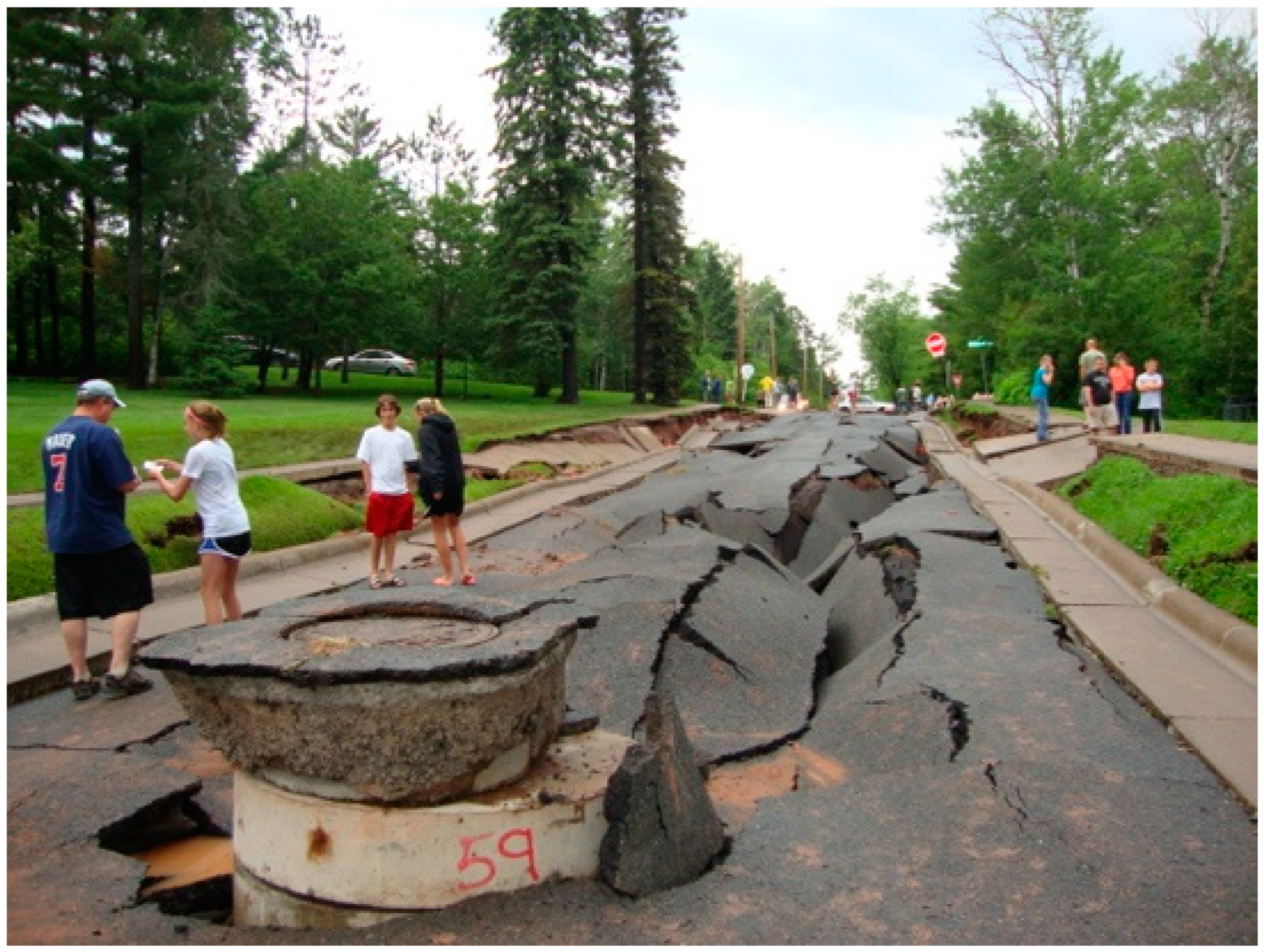
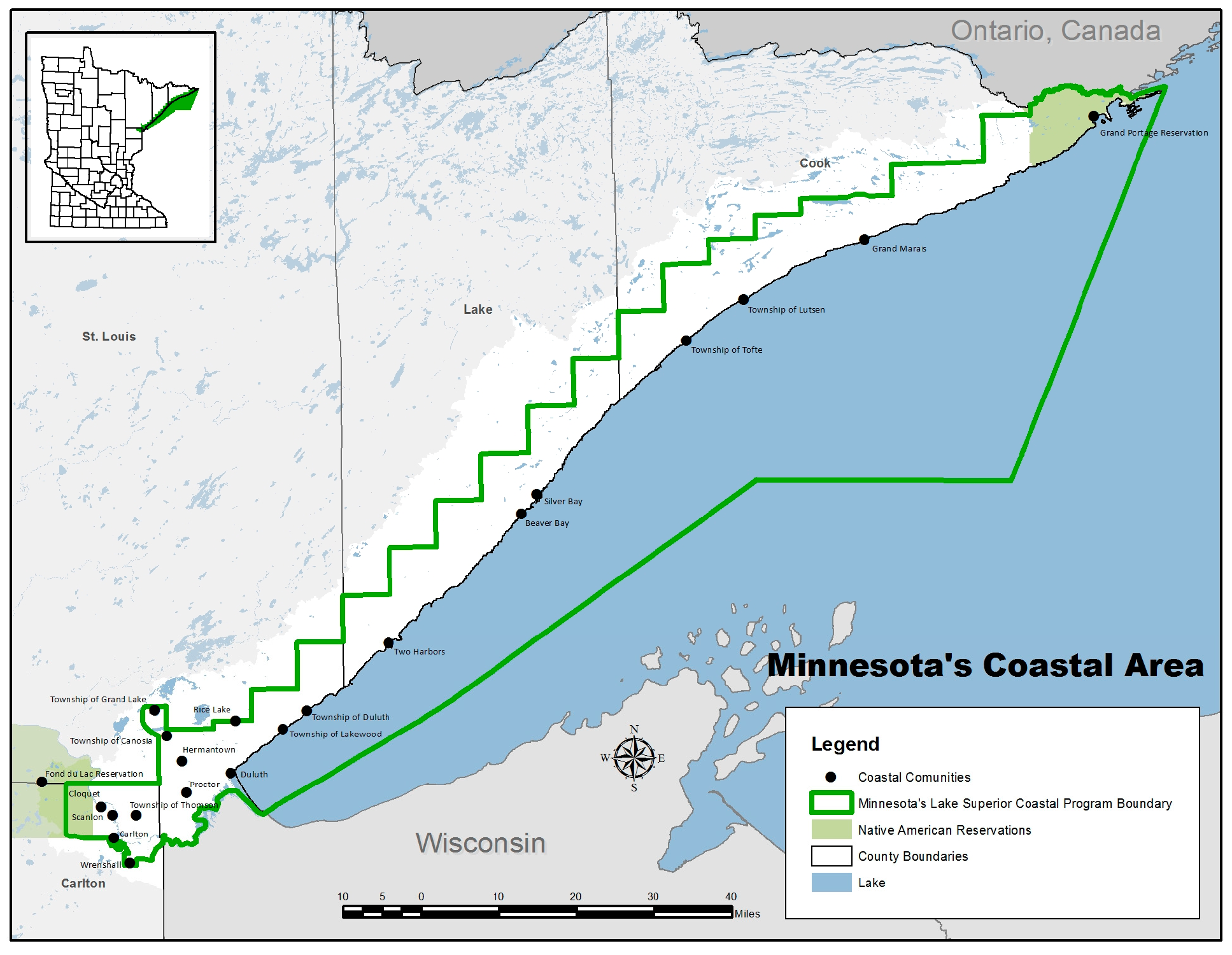
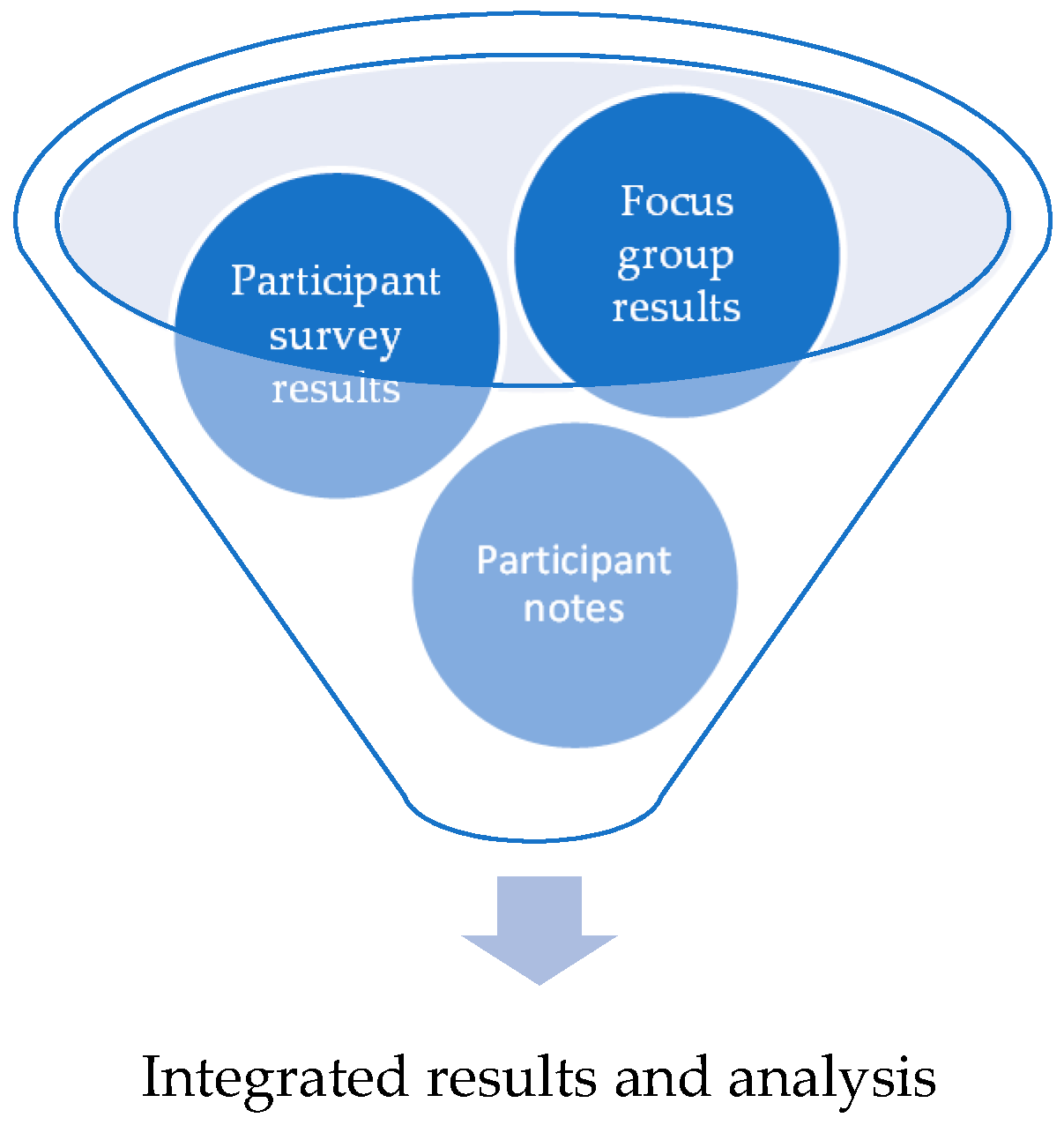
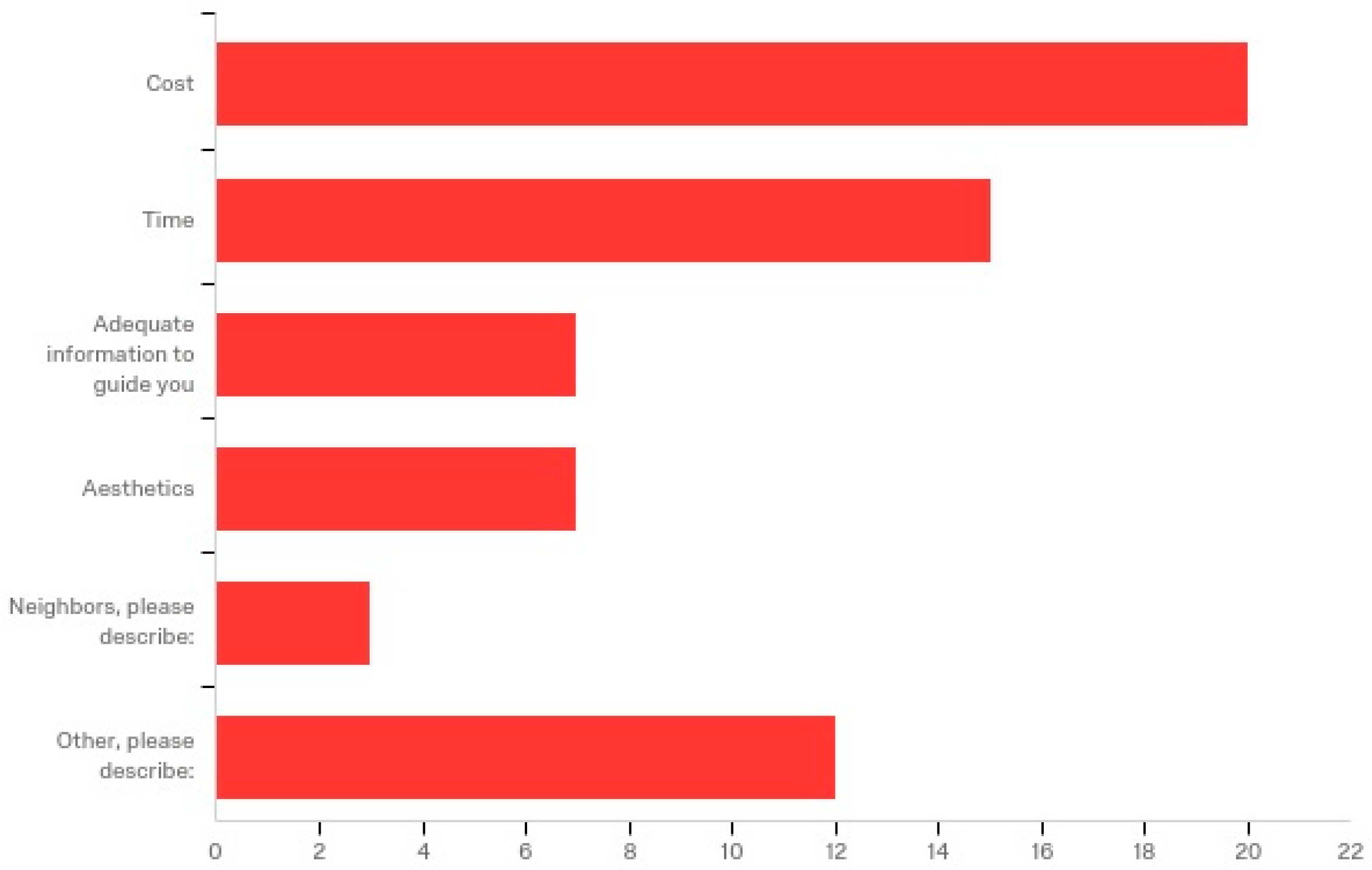
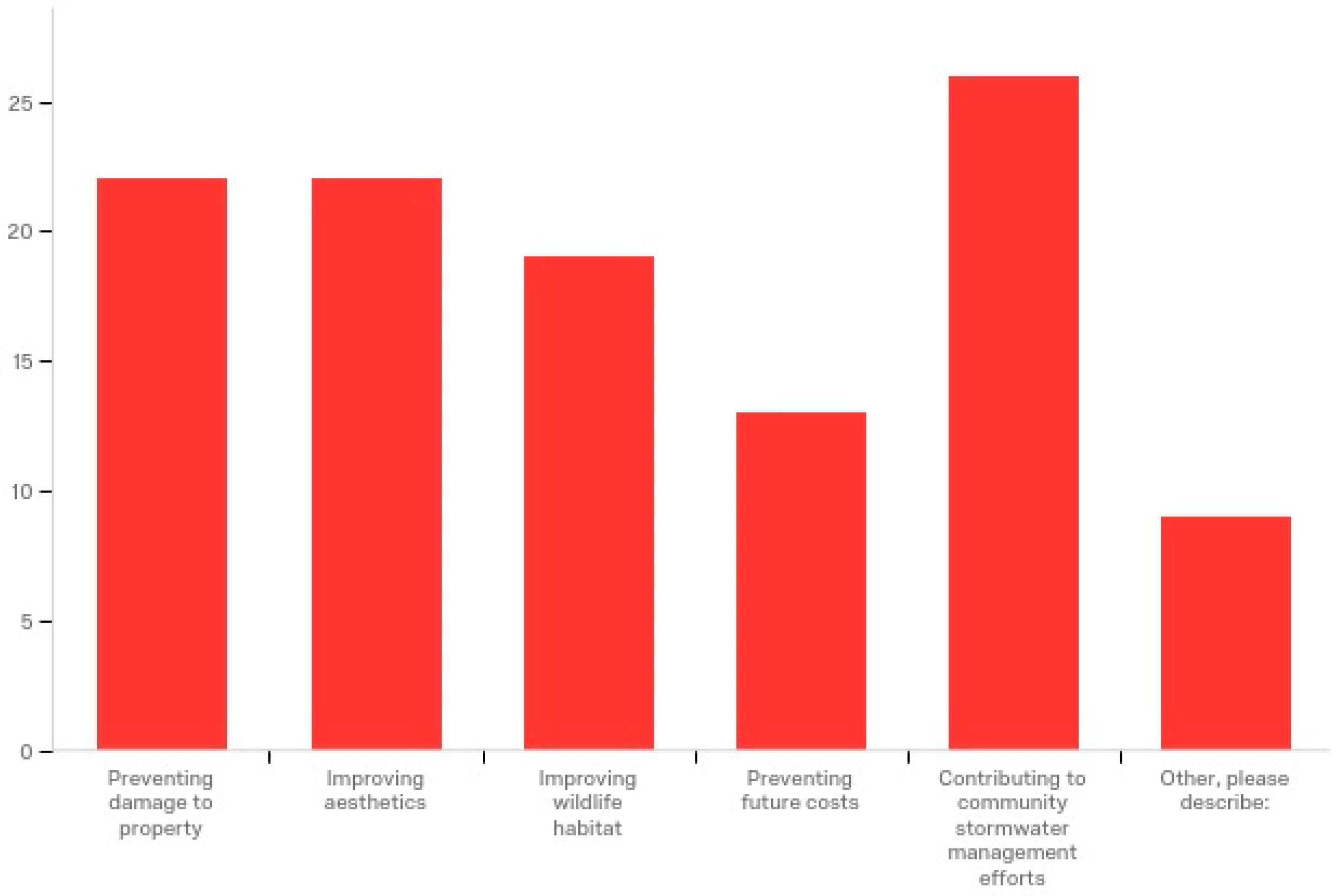
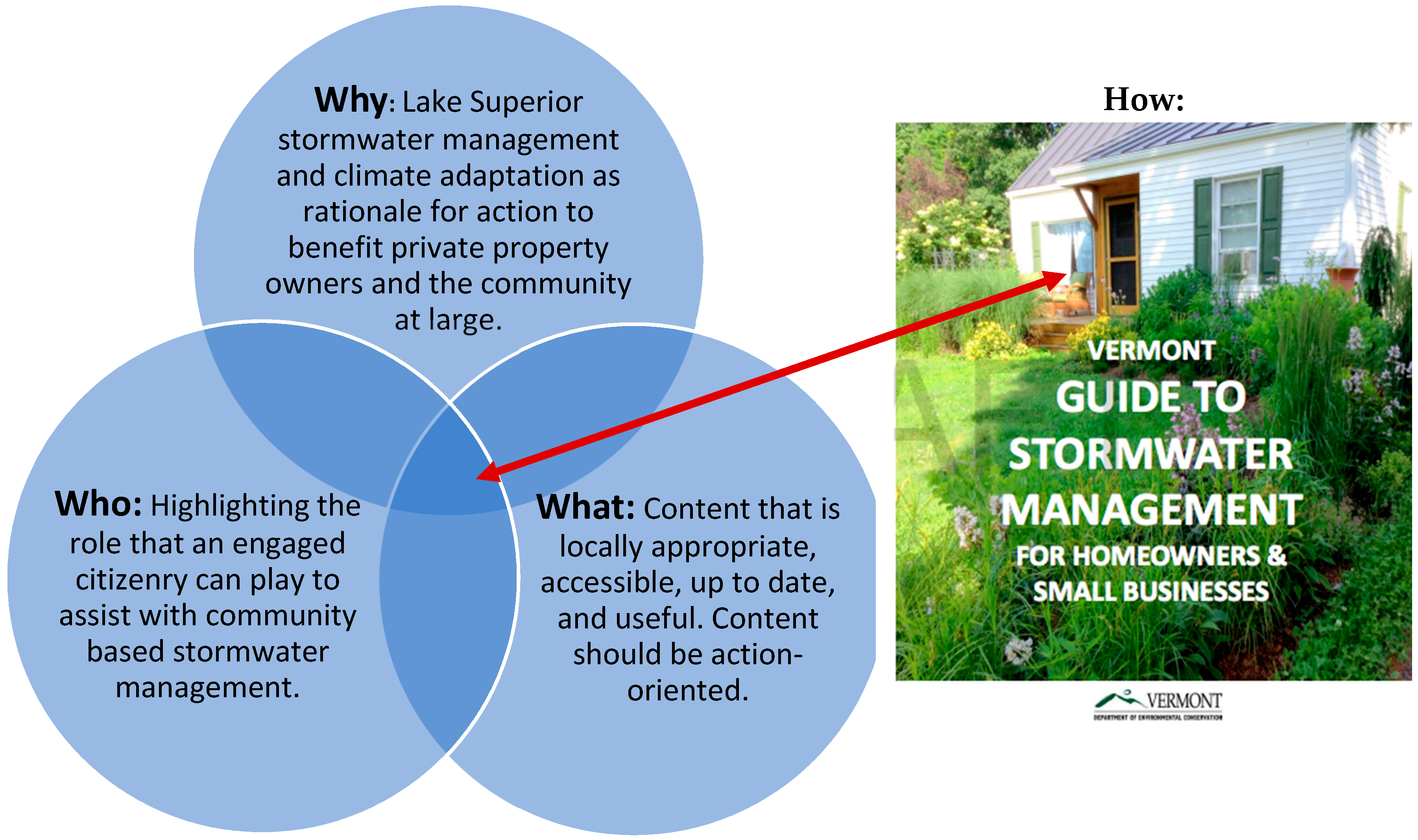
| Process Step and Description | |
|---|---|
| Step 1: Open coding | The data are read, evaluated, and divided into meaningful chunks. |
| Step 2: Axial coding | The chunks are grouped into categories. |
| Step 3: Themes emerge | Themes are identified that express the key content. |
| Step 4: Group to group analysis | Similar themes from each session are considered and refined. Unique themes are identified. |
© 2018 by the author. Licensee MDPI, Basel, Switzerland. This article is an open access article distributed under the terms and conditions of the Creative Commons Attribution (CC BY) license (http://creativecommons.org/licenses/by/4.0/).
Share and Cite
Beery, T. Engaging the Private Homeowner: Linking Climate Change and Green Stormwater Infrastructure. Sustainability 2018, 10, 4791. https://doi.org/10.3390/su10124791
Beery T. Engaging the Private Homeowner: Linking Climate Change and Green Stormwater Infrastructure. Sustainability. 2018; 10(12):4791. https://doi.org/10.3390/su10124791
Chicago/Turabian StyleBeery, Thomas. 2018. "Engaging the Private Homeowner: Linking Climate Change and Green Stormwater Infrastructure" Sustainability 10, no. 12: 4791. https://doi.org/10.3390/su10124791
APA StyleBeery, T. (2018). Engaging the Private Homeowner: Linking Climate Change and Green Stormwater Infrastructure. Sustainability, 10(12), 4791. https://doi.org/10.3390/su10124791




